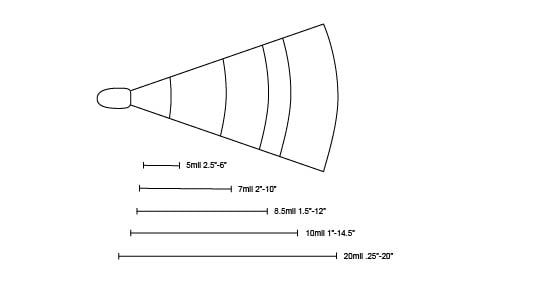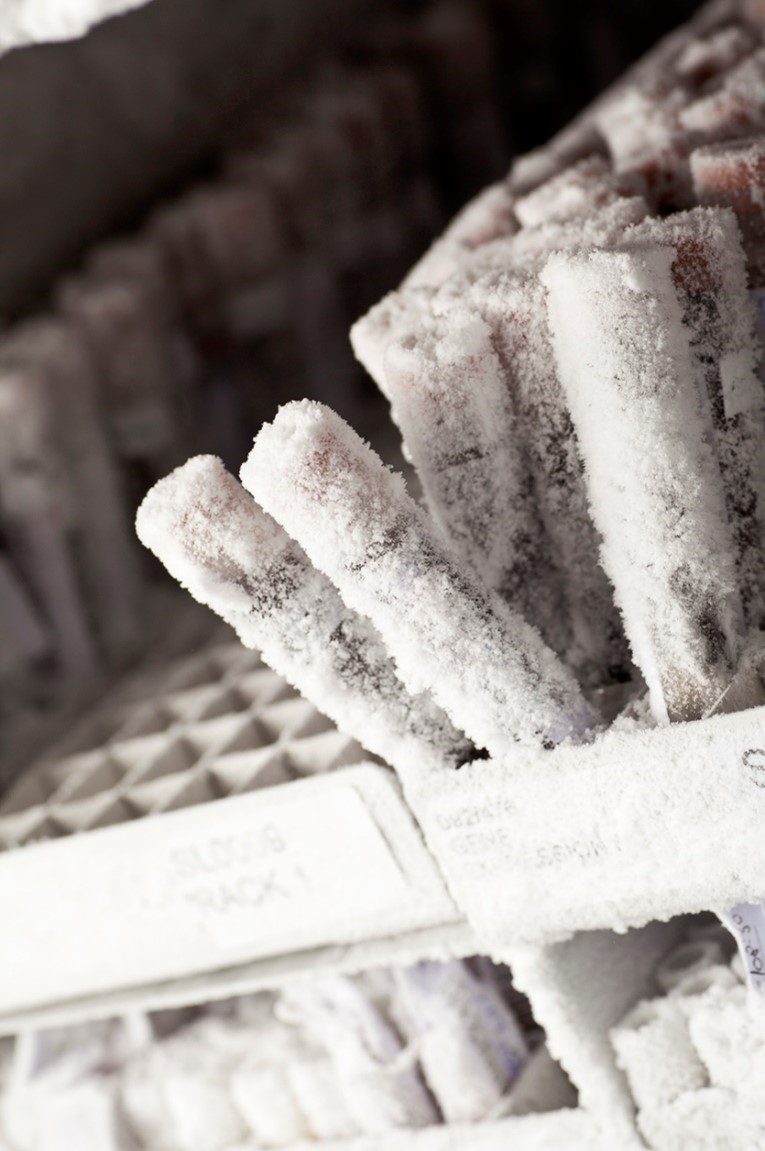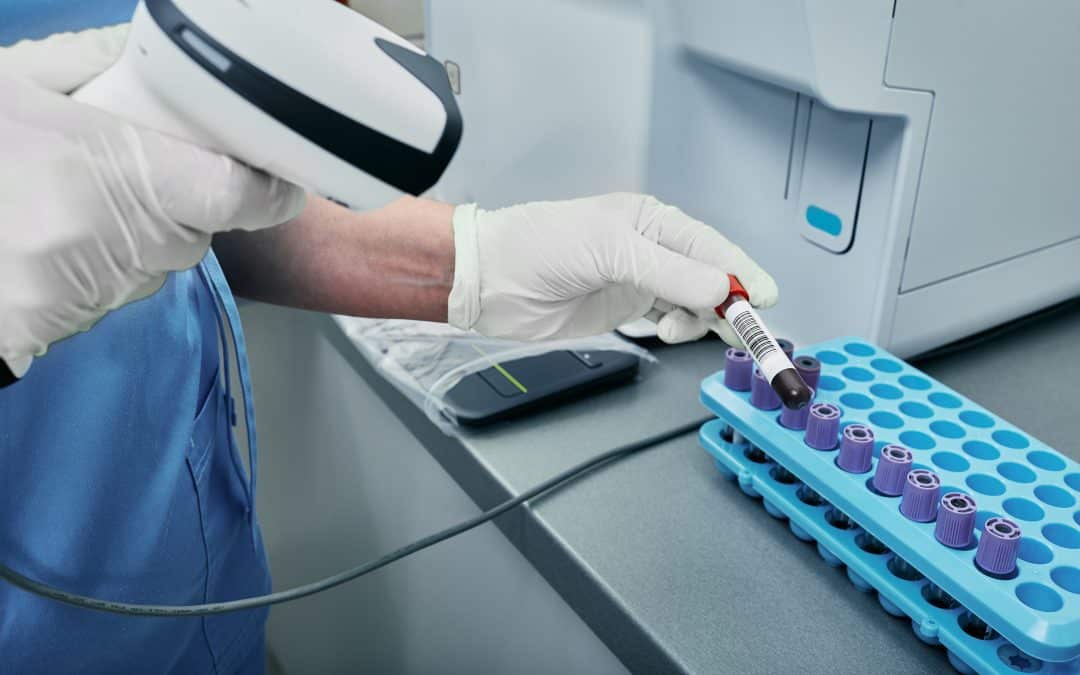Is scanning your bar codes more difficult than it should be? There are many reasons bar codes might not scan and most of them can be boiled down to one of three things:
- Your equipment isn’t suited to your bar codes.
- Your scanner isn’t being operated properly.
- Your bar code labels aren’t suited to your application or environment.
Though these explanations may sound simple enough, they each have their own complexities and various solutions. Lets dive into how to identify the cause of these three common scan problems, and our recommended solutions.
Your scanner isn’t suited to your bar codes
First, you need to ensure you have the right scanner for the job. Is your scanner older? If so, consider what type of bar code you are using. Is it linear or 2D? Although you’re unlikely to come across a bar code scanner incapable of reading 2D bar codes nowadays, some older models may only be able to read linear bar codes.
Once you’ve determined you have a suitable scanner, or if your scanner has worked in the past but has suddenly stopped, you can move onto the settings. One thing to check for is auto-discrimination. This is what detects bar code language. Check to see if auto-discrimination is enabled, if not you might want to try enabling it.
We should note that turning on auto-discrimination isn’t always the best solution, in fact we recommend against it in certain situations! So, if you have been advised to disable auto-discrimination, or, see that your scanner is only enabled to pick up certain bar code languages, ensure the settings allow your scanner to pick up the bar code language you are using.
If your scanner is neither old, nor set to read the incorrect bar code language, your issue may have to do with programming (or one of our later talking points).
There are many ways to program a bar code scanner and not all of them will work with your bar codes. It’s a good idea to check in with your scanner and/or bar code supplier to ensure your equipment and bar codes are compatible. If they aren’t, depending on the most suitable resolution for your application you may want to look into reprogramming your scanner, ordering a new scanner, or trying a different type of barcode.
You’re not scanning at the optimal angle or distance
If your scan issues aren’t consistent, or you can otherwise confirm your scanner is set up to read your bar codes, you may not be scanning correctly. We know! Scanning barcodes sounds like an easy enough task, but there are limits to what your scanner is capable of. The two most important factors when it comes to a good scan technique are angle and distance. Let’s go into more detail on each.
Angle
Scanners read bar codes by picking up on the contrast between the dark lines and spaces depicted in the code. You’ve probably noticed, especially on glossy surfaces, that light reflects off the bar code and visually disrupts the contrast of the code at certain angles. This glare not only affects the way we see the barcode, but the way the scanner sees it, making it more difficult for the scanner to pick up the image.
Environmental and label construction factors play a big role when it comes to the angle you hold your barcode to the scanner, as bright fluorescent lighting or glossy laminates can increase the likelihood of glare. In this case the best solution is to place or hold the labeled object at an angle that minimizes glare and provides your scanner with the clearest possible image.
Distance
Each scanner is designed with a specific read range or depth of field. Within that overall range are read ranges defined by the size of bar codes being read. In the simplest terms, the smaller the bar code, the closer the scanner needs to be, however, it’s still possible to be too close, even when a bar code is small.

Your bar code scanner’s manual should contain an image that looks something like the one depicted above. This image displays the ranges at which your scanner can read bar codes of different sizes. In this case, our reader can read 5mil bar codes at a distance between 2.5″-6″, but it can read a 10mil bar code between 1″ and 14.5″.
Keep in mind that different scanners are designed with different scan distances (or depths of field) to accommodate different use cases. For example, one scanner may be best suited for close range, or even contact scanning because it’s intended for use cases where items will be handled closely. Another scanner might be designed to read bar codes from further away to allow for quick scanning of items as they pass through a workflow on a conveyor belt.
If you suspect operation issues could be responsible for your scan problems take some time to review the specs and user manual of your scanner. Since environmental and label construction factors may have an impact as well, experiment with angle and distance recommendations to find an ideal method. Once you’ve taken the time to familiarize yourself with your scanner, provide your team with training on proper use and any additional tips or tricks you discovered as you experimented with the scan angle and distance.
Your bar code labels aren’t suited to your application or environment
So, you have the right equipment, and your employees are fully trained to use it but you’re still having consistent scan issues. Now it’s time to look at your barcodes and their relationship to your application and environment. There are 2 major application and environmental factors when it comes to scannability: image quality as well as dirt and damage.
Image quality
Image quality is determined by your printer—both its specifications and how it’s being operated and maintained.
First you want to make sure you have the right printer for the job. By that we mean it’s capable of printing the resolution you need (in most cases it will be). Most printers are capable of at least 200 dpi image resolution, if not 300 dpi. 300 dpi is considered standard and is suitable for nearly all applications.
There is really only one situation where image resolution can become an issue and that’s you have really small labels and are trying to store a lot of data. If your printer meets dpi requirements but bar codes still aren’t performing, or performance seems to be worsening over time, the operation or maintenance of your printers could be the culprit.
Does your printer have multiple speed options? Are you always running it at the highest speed? If you answered yes to both of these questions and you’re experiencing scanning problems, you may want to try lowering the speed of your printer. Speed compromises quality, so although your printer may be capable of 300 dpi, it may not be capable of that quality when running at 12 inches per second.
Have you replaced your print head recently? Are you cleaning it regularly? If not, your printer may just need a little TLC. Some suppliers offer regular maintenance visits so be sure to take advantage of those offerings if they are part of your contract! A well-maintained printer will perform better and last longer so, prioritize your printer’s wellness to take your investment further.
Dirt & damage
Many of our customers work in harsh environments where grease, grime or harsh chemicals are unavoidable. These factors can play a major role in the readability of your bar codes.
First, if you’re working in a particularly grimy environment you will want to ensure bar codes are wiped clean before scanning if you are struggling with reads. Dirt and grime covering even just a section of your bar code can prevent a scanner from getting an accurate read.
If your bar codes are clean and you’re struggling to get reads towards the latter end of harsh processing or storage practices, the issue may have more to do with damage than dirt. Harsh chemicals, extreme temperatures and abrasion can all lead to bar code damage. Whether the damage comes in the form of peeling, smearing or scratching, it can affect bar code scanning.
Because these damaging exposures are likely a necessary part of your processing, the best way to ensure the readability of your bar codes is to protect your bar codes. Take a look at your print technology, is it the most durable option? If you’re utilizing a print on-demand strategy you’ll likely want to be using thermal transfer technology, as it’s the most durable print on-demand technology. If that’s not working and you can sacrifice time sensitive information, talk to your supplier about more durable pre-printed options.
If you’re already ordering pre-printed labels, ask your supplier if they have any recommendations. They may have more durable options available, they might cost a bit more, but you’ll see return in the lasting integrity of your products or samples.

We offer various durable print technologies that simply require too much equipment for most of our customers to achieve in-house, we can also enhance their durability with coatings and laminates. In addition, our customers in Life Sciences can gain access to highly durable marking technologies, like cured ink and ceramic identification, through our Labware Prep™ Services program.
As you can see, there are a lot of things that can interfere with the readability of your bar codes. Fortunately, there are a lot of ways you can correct scanning issues on your own. We hope this blog helps you locate and solve any readability issues in your facility, and if you weren’t able find a solution it might be time to give your suppliers or solutions partner a call.
This leads us to another piece of advice, if you aren’t already, we recommend working with a solutions partner rather than individual suppliers if you can. When you work with a solutions partner they can source all necessary equipment and utilize their expertise to ensure your barcodes and equipment are complimentary to one another for optimal scanning.

